Featured image: ©istockphoto.com / benedek
Canada, a land of beautiful scenery and congenial spirit, balances energetic city life with a calmer, relaxed lifestyle by the water. And if you ask Billie Pat Dall, sales representative at Bernice Whelan Realty Inc., about the real estate market, she’ll tell you that the area in which she sells (the Lake Simcoe and Barrie area of Ontario) is attractive for buyers who are looking for more space.
Only an hour north of Toronto, Barrie offers luxury homes at more affordable prices than in the city, ranging from $2 million to $20 million. Homes are complete with gourmet kitchens, main floor principal suites, home theaters, wine cellars, sports courts, and pools. Residents who live on the water enjoy charming boat houses with guest suites and tranquil water views.
According to Dall, Barrie is also an ideal area to raise a family, as residents have a wide array of outdoor activities at their fingertips.
“It is a place where kids can ride their bikes down to the beach and then over to one of the many tennis courts or to play basketball, and then back home to swim in their backyard pool. All of this is at your doorstep when you live in this region. There is also the added bonus of only being a one-hour drive away from Toronto, so parents can commute if they work in Toronto and visit for a Jays baseball game, theater or concert,” she explains.
Besides athletic endeavors, the Lake Simcoe region also hosts Canada’s largest camping and country music festival, The Hearts and Boots Festival, and Ontario’s biggest waterfront festival, Kempenfest.
Oakville, located just 45 minutes south of Toronto, boasts a thriving market as well, being one of the most densely populated regions in Canada. Lesley Cumming, sales representative at Sotheby’s International Realty Canada, describes Oakville and Burlington as the “home to hikers, bikers, economic trail glazers, casual boaters, and local vendor enthusiasts.”
In Oakville and Burlington, you can find condos situated on the shores of Lake Ontario and 50-plus-acre properties with rolling hills, bank barns, horse stalls, ponds, and paddocks. Locals can head over to lakes, beaches, marinas, and conservation trails to absorb the stunning landscape.
Cumming notes that most new buyers in this region were previously urban dwellers from the Greater Toronto Area, in search of a smaller community with more property space. With varied landscape, cuisine, and population, Oakville and Burlington find a way to keep residents and visitors entertained while also cultivating an at-home feel.
“There is so much that is attractive about our region from the diverse cuisine, our local specialty shops, to our beautiful landscape. We have something for everyone,” Cumming says.



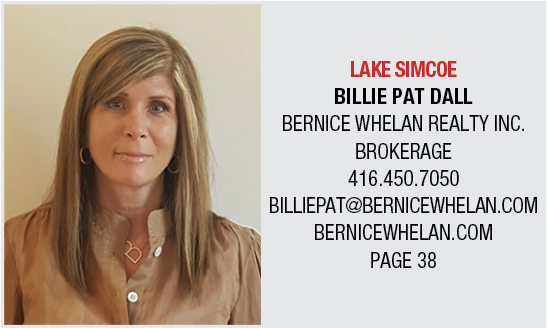
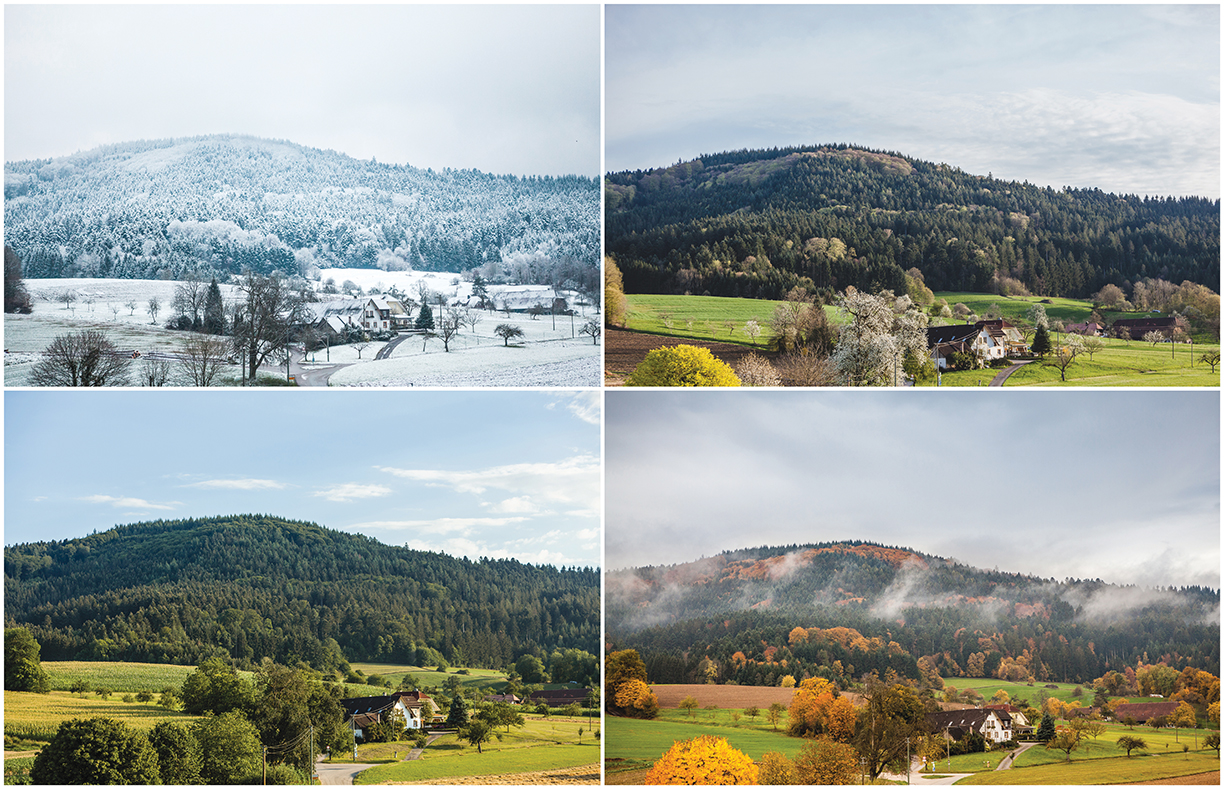
©istockphoto.com / Arita Cimermane
“The seasons in the landscape, much like the seasons of one’s life, are to be embraced, appreciated and weathered.” — Robin Kramer
When it comes to the seasons, an adaptable landscape is always a challenge. In northern climates, the focus is too often on the fleeting warmer months where blossoms are abundant and beautiful. Into late fall, the vibrant leaves have fallen and a bare winter — and landscape — sets in. In warmer areas, the challenge is less about the seasons and more about weather extremes such as droughts or rain.
We talked to luxury landscape designers about how they work through the challenges of the changing seasons and find beauty in the landscape all year long.
A Strong Framework
“I consider structure to be the most critical component in any garden. A successful garden design will look good in any season if the bones of the garden are well designed,” says New York City-based Landscape Designer Robin Kramer. “Paths, walls, edging, hedges, pergolas and water features are the permanent features that make a garden strong and confident. The flowering plant material is the dressing of the landscape and can easily be modified based on the desires of the gardener.”
“Ideally, a landscape is something that transitions throughout the year and it has its glory days throughout every season,” says Vermont-based Landscape Designer Ashley J. Robinson. “They are rarely looking for a one-shot wonder with a full-on explosion of bloom in the spring.”
Robinson seeks out materials such as wood, metal or other elements that are not herbaceous in order to craft a composition that is visually intriguing despite the blooms, or lack of blooms. “Natural stone, boulders, outcropping in the garden. A well-intentioned feature is important for a winter garden.”
Similarly, Teresa Watkins, a Master Gardener and specialized horticulturist for over 20 years in Florida, relies on hardscape and garden art to design spaces that truly fit a client’s personality, while at the same time ensuring the health and sustainability of the landscape. “I have an ongoing two-year project designing a formal estate landscape with a rose garden with walls, a faux stone bridge, butterfly garden, water features, orchard, meandering pathways and poolscaping.”
An architectural framework is key to high-end landscape, and Pennsylvania-based Landscape Designer Donald Pell is an expert at finding a balance of this within a range of vernaculars — from English-style to modern. “Our work always includes thoughtfully designed architectural spaces. These can be simple and they can be very substantial,” he says. “Right now, I am building a very large promenade through a woodland
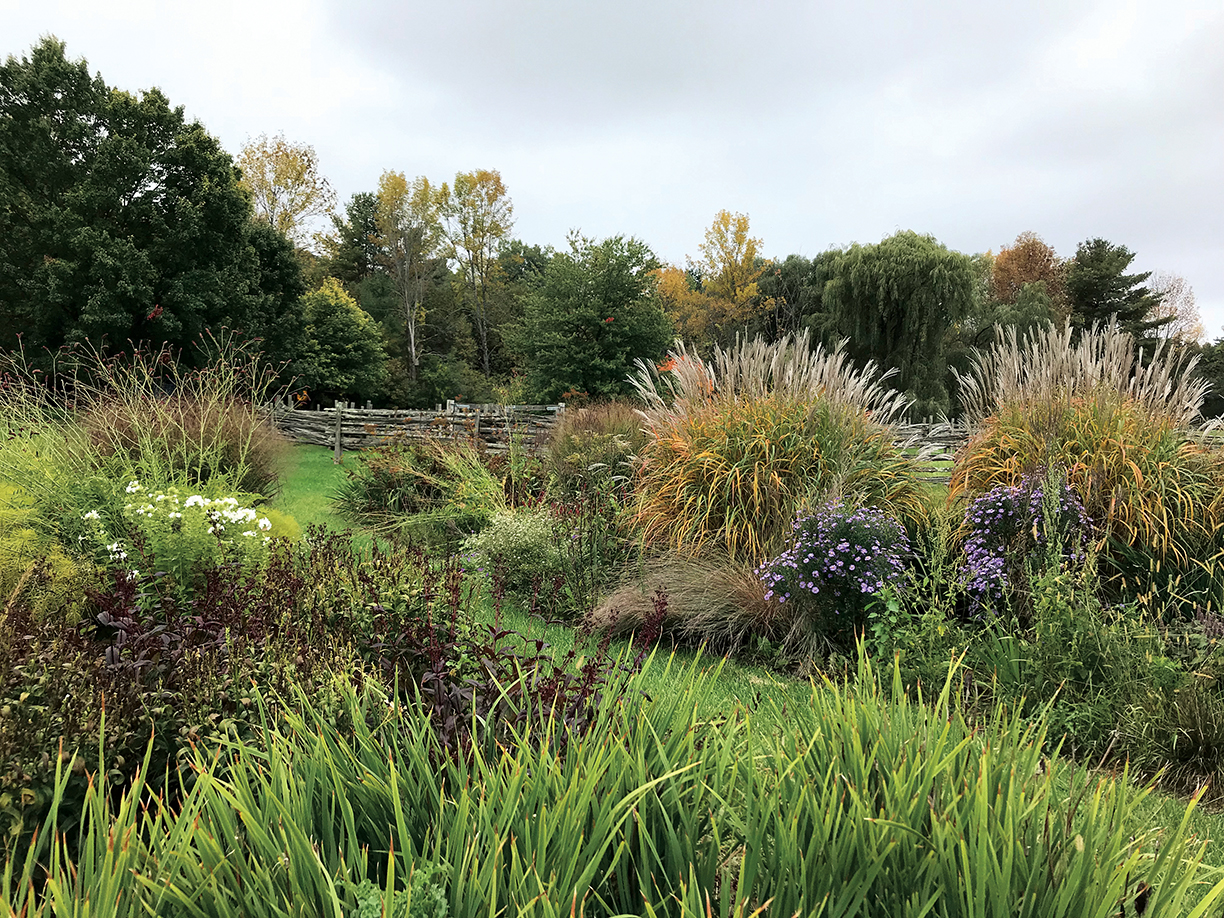
|
A beautiful wild garden crafted by Vermont Landscape Designer Ashley J. Robinson. Photo courtesy of Ashley J. Robinson. |
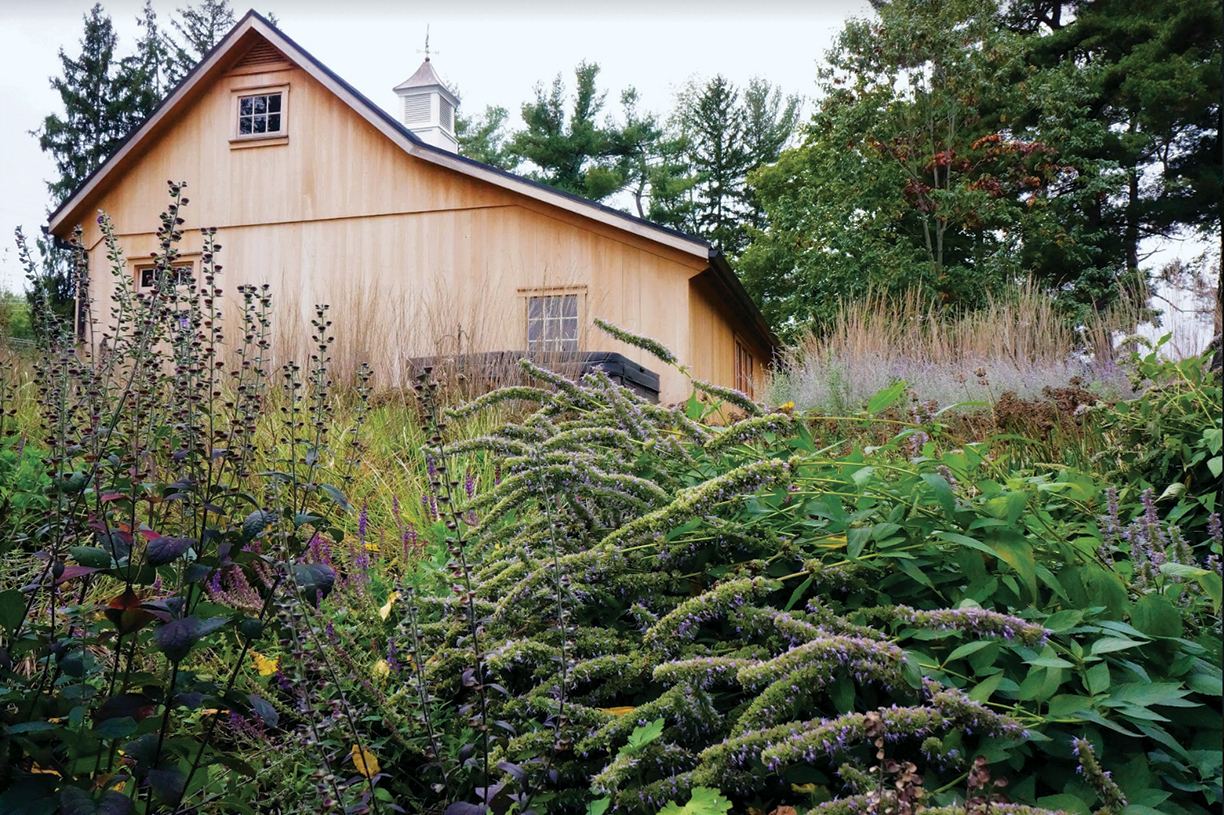
|
Donald Pell Gardens gave this 1700s Colonial Farmhouse garden an update with native and cosmopolitan plants used to evoke the regional landscape. Photo courtesy of Donald Pell. |
that I would describe as very classical, and the plantings are very much impressionistic woodland. I specified hand-cut fieldstone curbing with paths that has a Pennsylvania Colonial feel, and I really like bond pattern paving details angled from the home, which tend to be very modernist.”
When it comes to warmer climates, such as those of the Sun Belt, structure has less to do with looking good throughout bare seasons, but more to do with a landscape that can sustain year-round outdoor living. “For contemporary homes in Southern California, the indoors rolls right outside,” says landscape architect Scott Zucker. “You’ve got enormous sliding doors with pocket entry, kitchen and family rooms that pour right out onto the terrace.” In designing these homes, materials that can withstand the outdoors, but also look just as beautiful indoors is the challenge. A huge trend, Zucker points out, is utilizing porcelain or ceramic pavers that not only keep a stunning transitional look, but also require very little maintenance.
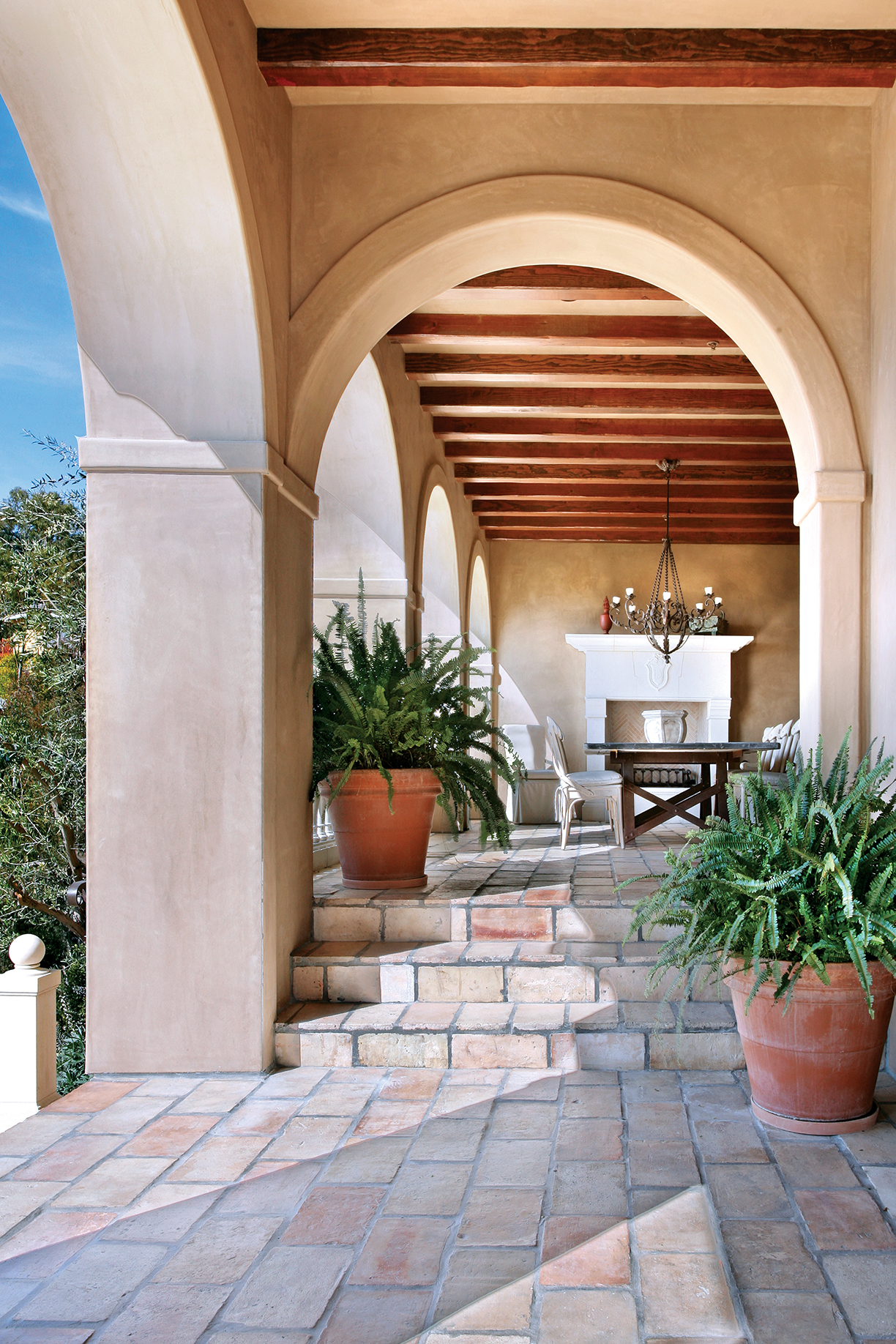
|
Above, an outdoor portico crafted from stone at a Southern California residence designed by Scott Zucker of Zucker Design Associates, Inc. Below, an arbor for a Laguna Beach residence offers an eye-catching landscaping feature. Top photo courtesy of Jeri Koegal. Bottom photo courtesy of Scott Zucker. |
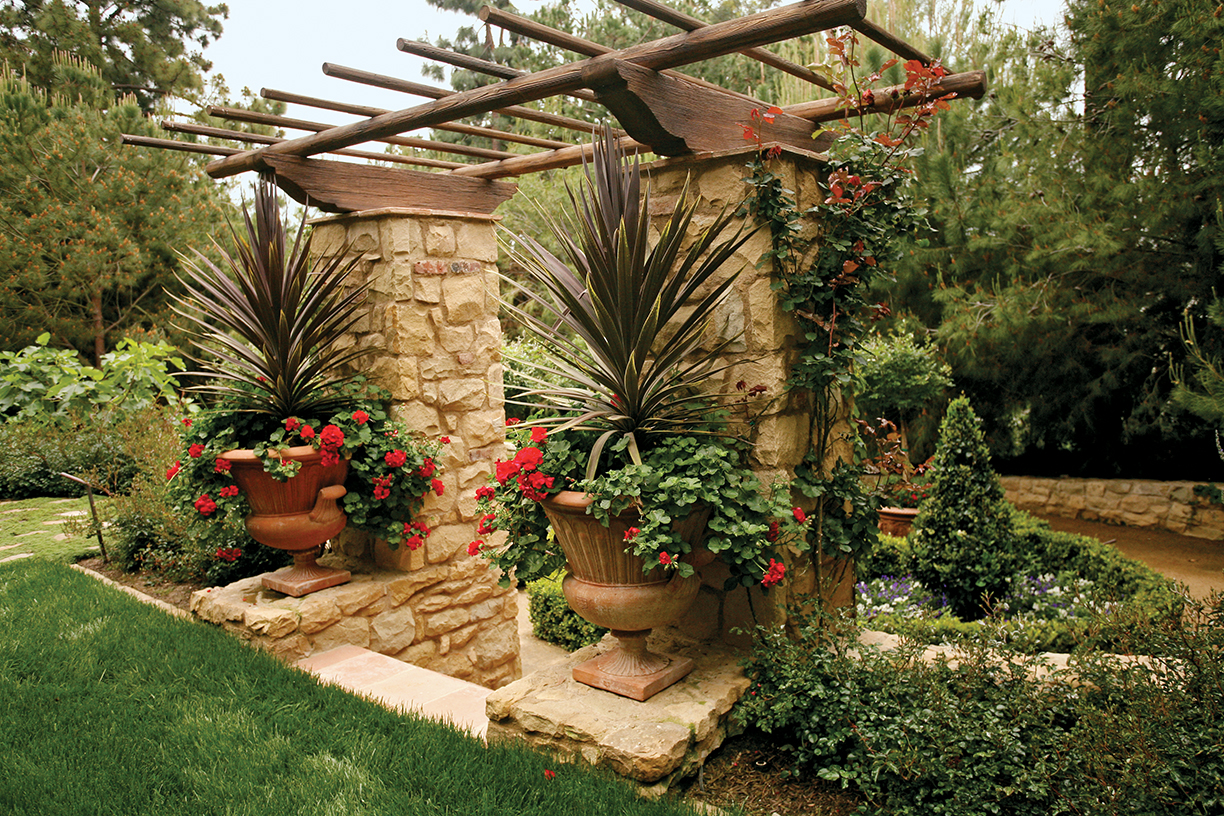
The Four Seasons
“The seasons themselves aren’t a challenge, but an exciting opportunity,” says Pell. “Even thinking about texture and emotion of the dead tissue of herbaceous plants can be an opportunity to compose something beautiful. It’s the same as working anywhere in the world — there are opportunities and constraints.”
While spring and summer’s spotlight is on the flower, that shifts completely when fall arrives. “I never focus on just the flower,” advises Pell. “They are just too ephemeral. They are, of course, an important component, but the structures of the plantings at their worst is where I start. I am looking for plants that look very beautiful in a given composition, and I want the composition to be able to hold up in extremes of weather.”
“Designing through the seasons takes careful planning and a thorough understanding horticulturally on the attributes of trees and plants,” says Kramer. “Floral succession bloom is created by selecting perennials that will create a parade of flowers from spring through to the first frost. This is supported by spring bulbs and flowering trees.”
“In fall, we plant thousands of spring bulbs. It is a late task in season, but such an important one,” continues Kramer. “In the spring, I want the ground to be punctured with green shoots pushing their way forward, poising for their bloom. After months of frigid temperatures and inches, even feet, of snow, New England begins to warm. Those rather odd-looking bulbs we planted are now a sure sign of spring and a reminder that we too, have survived another winter.”
“There’s a lot to be said for winter in the garden,” says Robinson. “It requires you to not do a lot of cut back or maintenance. Generally speaking, you should wait out the things you don’t want there, such as foliage debris and leaf litter — these things are good for increasing organic matter in the soil. You shouldn’t scrape landscape bare — it’s all about layering and allowing that to happen naturally.”
Warmer Climates
While places with warmer climates, such as Southern California or Florida, don’t have the challenges of designing through autumn and winter, they do have seasons of their own: dry season, fire season, and wet season.
“The water use in California really drives what we can and can’t do,” says Zucker, who mentions WELO (Modern Water Efficient Landscape Ordinance) and fire departments regulations, as well as restrictions on paving and the amount of non-permeable landscape a property is allowed to have. “One of the trends that is big in California these days — necessitated by lack of water — is drought-tolerant plants.” These include plants such as succulents or agaves that also offer stunning structural plant material that really create a powerful look for a landscape.
“When I’m working on my designs, I take into account not necessarily annuals or perennials, but the permanent flowers that clients especially desire so that at any time of the year it will be blooming,” says Zucker. “I tend to group plant material together to give a bigger impact. Instead of giving too many species, I pare it down so that aesthetically, from the front yard to the backyard, the whole landscape ties together.”
While Zucker is looking for colorful plantings that can withstand the lack of water, places like Florida experience the opposite — with a wet season that lasts at least half of the year. “Florida winter season can be dramatic. We can go from 85 degrees one day to 28 degrees the next, which is not enough time for tropical plants to acclimate to cooler temperatures,” says Watkins. “The other issues are temperatures averaging 85 degrees for six to seven months out of the year, where our plants can be growing all year, and over 50 inches of rain.”
It’s in these areas where irrigation designers are needed most fevertly along with specialized consideration of the amount of sunlight, soil moisture, soil pH — all extremes associated with the tropics. Without seasonal change, there is also a shortage of compost, plant material and nutrients, which is easily received each fall with the turning of the seasons in other parts of the country.
“I often say, all of life’s lessons are learned in the garden,” says Kramer. “Each season delivers reminders and rituals. It is the moments on which lives are built and cherished.”
Offering a one-stop shop for high-end design — architecture, landscape architecture and interior design services under a single roof on Los Angeles’ famed Miracle Mile — is Studio William Hefner.
The office’s location on this stretch of Wilshire Boulevard, lined by Art Deco masterpieces and many of the city’s museums, is clearly inspirational for designers.
Originally from Northern California, Hefner arrived in Los Angeles to earn a graduate degree in architecture from UCLA and founded his current practice in 1989. He oversees a highly collaborative staff of about 35 in L.A. and maintains a smaller office in the idyllic coastal community of Montecito, outside of Santa Barbara.
Hefner, who studied art history in college and appreciates a diversity of design, draws inspiration from landmark residences scattered throughout Southern California. He is appreciative of traditionalists like Wallace Neff and Paul Williams — their Mediterranean estates have long been popular with Hollywood celebrities — as well as Mid-Century Modern masters Rudolph Schindler and Richard Neutra. As a result, Hefner’s practice encompasses a wide spectrum of architectural styles and his firm adapts to evolving preferences.
“In my practice, I try not to have a ‘signature’ style but strive toward quality design and execution in different genres, from very traditional to contemporary,” says Hefner, who reports about 60 percent of his current commissions are modern, a share that has doubled in the past decade. “Modern residential architecture has come in and out of style over the past 30 years but is finally becoming more of a lifestyle, not just a fashion or trend,” says Hefner, who adds, “I think it’s here to stay.” In Los Angeles — where so many high-end homes are in the hills or along the coast — modern design maximizes views and suits the region’s indoor-outdoor lifestyle.
Commissioned to design a massive residence on 10 precious acres in L.A.’s opulent Bel-Air neighborhood, Hefner created a formidable French-style estate known as Château des Fleurs. The client’s original inspiration was the majestic Hôtel du Cap on France’s Côte d’Azur, and Hefner conducted extensive research in Paris, Versailles and the Loire Valley to ensure that every detail was authentic. “We wanted to make sure each room was special and unique,” explains Hefner of the house, which has 31 bathrooms. Despite the scale of the project, the architect took care to create intimate, family-friendly spaces throughout the home in addition to grand rooms for entertainment.
When the 60,000-square-foot residence was completed in 2013 after five years of construction, it was the largest home in a city famous for conspicuous consumption. In his lavishly illustrated book Château des Fleurs (Pointed Leaf Press, 2016), Hefner explains a progressive approach to classic French design. “The balance of this house was to create a powerfully simple structure that would feel timeless and not imitative, while inviting an Old World opulence to the fit and finish of the architecture in a way that would be both decorative and something more: modern,” he writes.

Another more classically inspired design from Hefner is an oceanfront home in L.A.’s Pacific Palisades, a celebrity-favored enclave with a rich architectural history. This home features an Italianate design, dazzling spiral staircase and lush landscaping. In the very same community, in the foothills of the Santa Monica Mountains, Hefner authored a sprawling modern residence in which the floorplan was meticulously oriented to ensure optimal views from every room.
An approximately 7,000-square-foot home in Beverly Hills’ coveted Trousdale Estates is one of Studio William Hefner’s most notable expressions of modernism. Reminiscent of L.A.’s influential Case Study Houses from prominent Mid-Century Modern architects, it was commissioned for a client with an extraordinary modern art collection. “Accommodating art is always a challenge in a view house,” says Hefner, who notes the requisite expanses of glass tend to limit available wall space.
In suburban Sierra Madre, a considerably more rustic community than Beverly Hills, Hefner created a thoroughly contemporary residence in an environment where Craftsman bungalows and Spanish Revival homes are the prevailing architecture. But through a generous use of stone and wood, he was able to infuse the property with considerable warmth, softening the impact of its modernist theme.
“My philosophy, in both traditional and modern homes, is to introduce spaces for indoor-outdoor living, which is a reason we offer landscape architecture among our services,” says Hefner. “In Southern California, the entire site becomes a living space, with large patios, covered outdoor living areas and landscaped courtyards that people can use throughout the year,” he explains. In Hefner-designed landscape design projects, swimming pools often double as reflecting pools, fountain-laden patios assume the serenity of Zen gardens and cacti provide a compelling complement to austere clean-lined structures.

Like New York’s idiosyncratic Peter Marino, a talent he admires, Hefner is an architect who has expanded his practice to incorporate interior design. “I always had a strong interest in interiors and was disappointed when some of my early projects were not finished the way I had envisioned them, so I began designing interiors myself,” recounts Hefner. Now heading up the interior specialty at the firm is his wife, accomplished designer Kazuko Hoshino, and the firm produces custom-made furniture and accessories that enhance the interiors she creates.
Among Studio William Hefner’s custom-made products are the Infinity console, a plane of wood supported by two circular bands of steel, and the strikingly contemporary Halo mirror with its echoes of Mid-Century Modernism. Featuring a modern simplicity are the Capri lounge chair and distinctive Willow nightstand. Even the most contemporary of these pieces can complement vintage architectural settings, as Hefner and Hoshino have demonstrated in their own 1920s residence in L.A.’s fashionable Hancock Park neighborhood.

Before Hefner founded his own company, he worked for Skidmore Owings & Merrill, one of the world’s largest and most influential architecture firms, designing high-rise commercial buildings. “It was difficult to establish a personal connection with the ultimate users of the spaces,” laments Hefner, who appreciates residential design because of the more intimate relationship it forges between architect and client. Hefner encourages clients to fully participate in the design process, stating, “I think we do a better job when they’re more involved.”
The firm’s projects continue to be concentrated in Southern California, where Hefner believes the Mediterranean climate and the indoor-outdoor lifestyle it encourages affords him a genuine freedom of creativity. However, Studio William Hefner has designed residences in countries as disparate as South Korea, Turkey and Israel, and is currently undertaking projects in Seattle, the San Francisco Bay Area and Jackson Hole, Wyoming.
Photos courtesy of Laura Hull, James Ray Spahn, and Tyler William Parker














